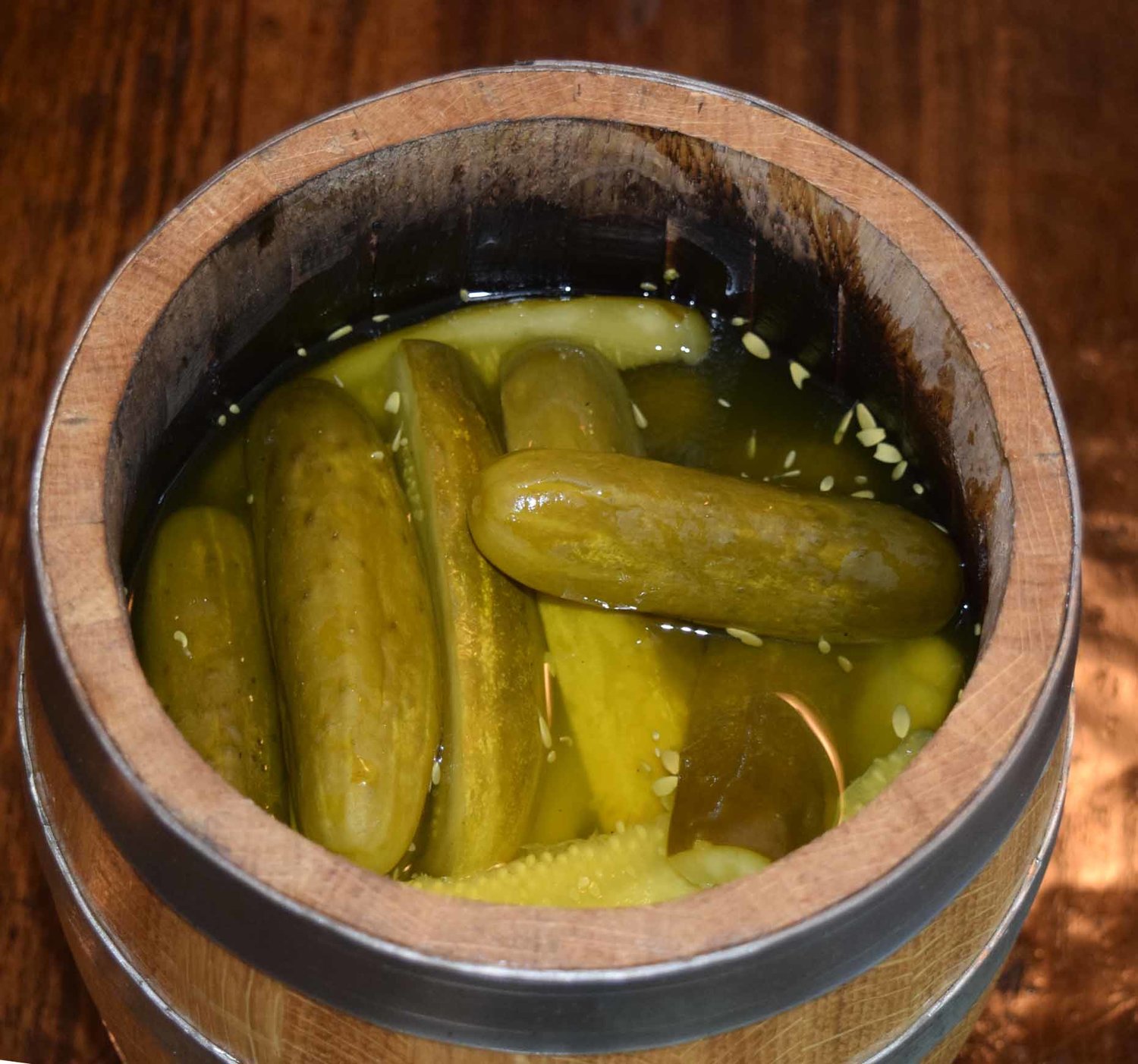This is a true story.
In the early 1900’s, my grandmother Avis lived with her family on the south side of Chicago. She was a little girl at the time, probably around 5 when this particular event occurred.
They lived above the family-owned and operated Ziemsen’s, a local neighborhood grocery store where folks could buy just about anything for the home… including pickles.
In fact, at the counter there were two large barrels of pickles for customers to purchase. On one of the barrels, there was a sign for 1 cent, and the other barrel was labeled 2 cents. This way, the customers had their choice of pickle.
Well, one day, my grandmother, Avis, noticed her grandfather restocking the barrels at the counter. He would bring a larger barrel of pickles from the back storage room, open it up and proceed to transfer pickles into both of the counter containers.
As you can imagine, this action puzzled my grandmother. Of course, being a five year old, she didn’t get it. So she asked him, “Goosfadder,” (that’s what she called him), “Why is it that you have two different barrels of pickles and one says they are for one penny and the other is for two pennies, but they are the same pickle?”
And he looked at her with his eyes of years of wisdom and said sweetly to her, “Well Avis, sometimes people just prefer a more expensive pickle.”
In other words, it’s not that one pickle is any better than the other, it’s the value that the customers are giving to their purchase. If they pay for the two cent pickle, they will appreciate it more. It’s a greater value. Same pickle, but for some reason it tastes better. On the other hand, perhaps those that buy the one penny pickle will feel like they’re getting a great deal (cause it’s a pretty darned good pickle) but are saving a whole penny. I mean, how much better could a two penny pickle be?

So really, it starts with the value that we place on our product, but it’s also about the value that the customer feels they are getting. And if those customers feel like they are getting a great value, either by getting a great pickle, or a great deal, they’re more likely to come back for more.
In case you haven’t made the connection, this is a great clear example of how we, as coaches, view ourselves and the rates for our coaching.
So the question I have for you is, “What kind of pickle is your coaching? A one cent or a two cent?” Only you will know.
But once you decide it–your price and your value–then put yourself on display in that barrel (metaphorically speaking, of course) and put a big sign out to tell everyone looking for a pickle that you offer the best pickle in the neighborhood.
(There are so much more of these insights and articles to help grow your coaching, plus video bits, downloads and TONS of archived recordings for you to enjoy, learn and grow. Visit http://bedo.org/freebies-and-downloads to access HUNDREDS of items all designed to help you truly BE the coach you are here to BE!)
